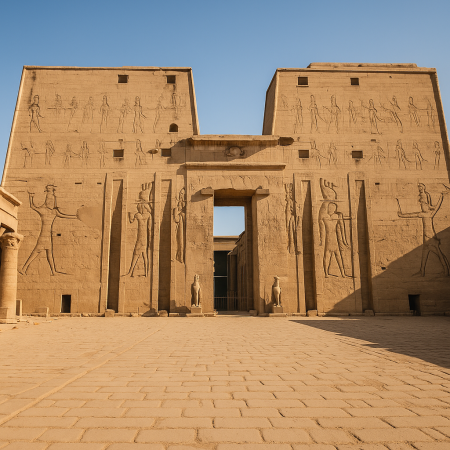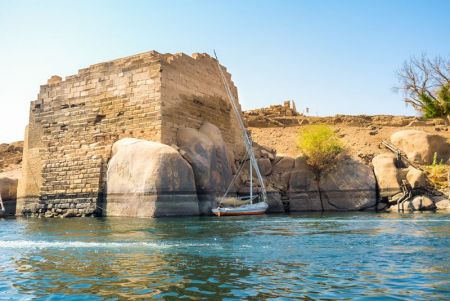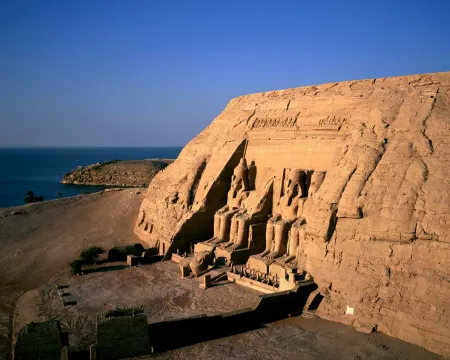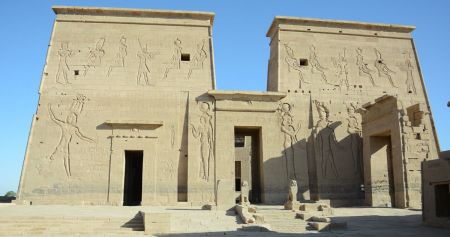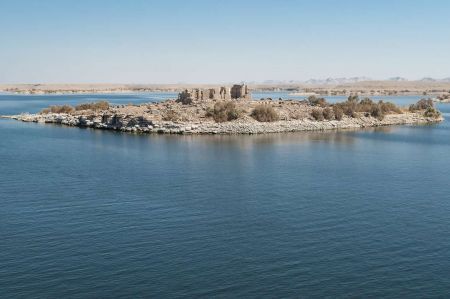The Nubian Museum : A Journey Through Nubia’s Lost Treasures
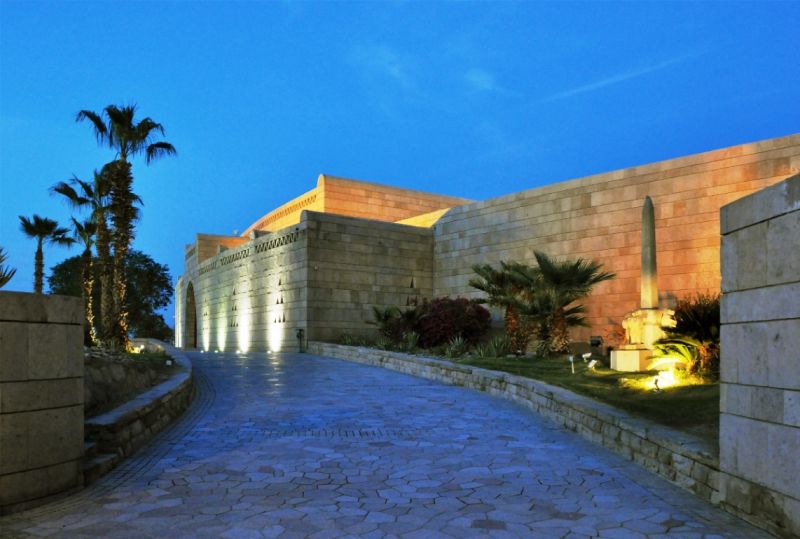
Introduction to the Nubian Museum in Aswan
Nestled in the heart of Aswan, the Nubian Museum stands as a living tribute to the rich cultural legacy of the Nubian people. Officially opened in 1997, this remarkable museum is more than just a collection of ancient artifacts—it’s a celebration of a civilization that has endured for thousands of years. The museum was born out of a UNESCO-led rescue campaign during the construction of the Aswan High Dam, which threatened to flood centuries-old Nubian settlements along the Nile. Today, the Nubian Museum preserves and showcases the unique identity, artistry, and heritage of Nubia, offering visitors an immersive experience that blends history, culture, and resilience. With over 3,000 objects and a lush landscaped garden dotted with statues, it stands as one of the most captivating cultural destinations in Egypt and Africa.
The Significance of Nubia in Ancient History
The Cradle of Civilizations
Nubia, located in southern Egypt and northern Sudan, was one of Africa’s earliest civilizations. Known as the “Land of the Bow,” Nubia was both a formidable kingdom and a vital trade corridor that linked sub-Saharan Africa to Egypt and the Mediterranean. From the powerful Kingdom of Kush to the rule of the 25th Dynasty over Egypt, Nubians played a central role in shaping the region’s politics, culture, and religion.
Contributions to Egyptian Culture
Nubians influenced Pharaonic architecture, military techniques, and religious traditions. Many pharaohs, especially during Egypt’s later dynasties, had strong ties to Nubian bloodlines and spiritual beliefs. The Nubian Museum highlights this complex cultural interplay through stunning exhibits that include traditional dress, jewelry, pottery, tools, and even entire tomb reconstructions.
What to See at the Nubian Museum
Ancient Artifacts and Relics
The museum’s collection spans prehistory to modern times. Stone tools from the Paleolithic era, intricately carved stelae, Christian Coptic art, and Islamic manuscripts all coexist under one roof. One of the standout exhibits is the statue of Ramses II beside a Nubian official—symbolizing both cultural harmony and political tension.
Reconstructed Nubian House
A life-size model of a traditional Nubian home, complete with painted walls, hand-woven baskets, and authentic furniture, offers visitors an intimate glimpse into domestic Nubian life. This ethnographic section helps modern audiences understand the daily rituals and social customs of Nubian families.
The Outdoor Garden and Sculpture Park
Spread across a hillside, the museum’s landscaped garden is a peaceful oasis filled with sculptures and monuments rescued from the flooded lands. Statues of ancient deities, royal figures, and mythical animals lie scattered among the palm trees and flowering shrubs, providing a tranquil yet historically rich environment.
Architectural Excellence of the Museum Building
Award-Winning Design
Designed by architect Mahmoud El-Hakim, the Nubian Museum harmonizes with its natural surroundings. Built into a rocky slope, the design mimics traditional Nubian architecture with domed ceilings, mudbrick facades, and intricate geometric patterns. The museum’s layout guides visitors through a chronological journey—beginning with prehistoric exhibits on the upper floors and descending into contemporary displays below.
Cultural and Educational Impact
UNESCO’s Role and Global Recognition
The museum is part of UNESCO’s larger effort to preserve endangered cultural heritage. It has received international praise for its role in educating the world about Nubia’s forgotten stories and for bringing marginalized African history to the forefront.
Workshops, Seminars, and School Programs
The museum regularly hosts cultural events, educational workshops, and art exhibitions that engage both locals and tourists. These programs aim to foster a deeper appreciation for Nubian heritage and to support the continuity of its traditions among younger generations.
Why the Nubian Museum is a Must-Visit in Aswan
A Cultural Treasure Trove
Unlike many other museums in Egypt that focus primarily on Pharaonic history, the Nubian Museum offers a rare, holistic view of one of the Nile’s most enduring communities. It appeals to scholars, travelers, and history buffs alike by showcasing a narrative that bridges the gap between African and Egyptian civilizations.
Easy Accessibility and Visitor Services
Located near downtown Aswan, the museum is easily accessible by taxi or on foot from most city hotels. It offers multilingual guided tours, an on-site bookshop, and a café overlooking the garden—ensuring a comfortable and enriching visit.
Tips for Planning Your Visit
Best Time to Visit
The ideal time to explore the museum is between October and April when Aswan’s climate is pleasantly warm. Visiting in the morning allows for a quiet, crowd-free experience.
Entry Fees and Opening Hours
The Nubian Museum is open daily, typically from 9 AM to 5 PM. Ticket prices are modest, and discounts are available for students and Egyptian nationals.
The Future of Nubian Heritage
Preservation Efforts and Digital Archiving
Ongoing efforts are being made to digitize the museum’s vast collection to make it accessible to global audiences. With the rising interest in African history, the Nubian Museum is also working on new exhibitions and international partnerships to ensure Nubia’s story continues to inspire future generations.
FAQs About the Nubian Museum
What makes the Nubian Museum different from other museums in Egypt?
Unlike traditional museums focusing on ancient Egypt alone, the Nubian Museum emphasizes the history, culture, and traditions of the Nubian people, showcasing a broader African narrative.
Is the museum suitable for children and families?
Yes, the museum features interactive exhibits, child-friendly sections, and outdoor gardens that make it an engaging educational outing for all ages.
Are guided tours available?
Yes, guided tours in multiple languages are offered, providing in-depth insights into the artifacts and the history behind them.
How long does a visit typically take?
A full visit usually takes 1.5 to 2 hours, depending on how much time visitors spend in the garden and at each exhibit.
Can I take photographs inside the museum?
Photography is allowed in most areas of the museum, but flash photography and video recordings may be restricted in certain exhibits.
Does the museum host temporary exhibitions?
Yes, the Nubian Museum regularly organizes temporary exhibitions and cultural events featuring Nubian art, music, and storytelling.
Final Thoughts
The Nubian Museum in Aswan is not just a museum—it’s a bridge connecting the past and the present, a tribute to a proud people whose voice might have been drowned by the Nile if not for global conservation efforts. It invites every visitor to listen, learn, and walk through the colorful, resilient, and inspiring story of Nubia—etched not only in stone but in the living culture that continues to thrive today.



